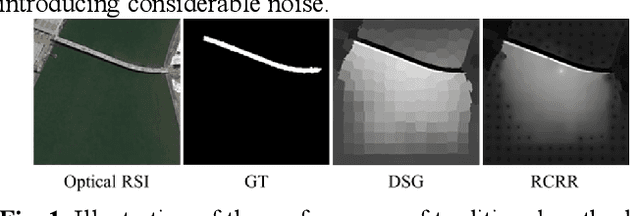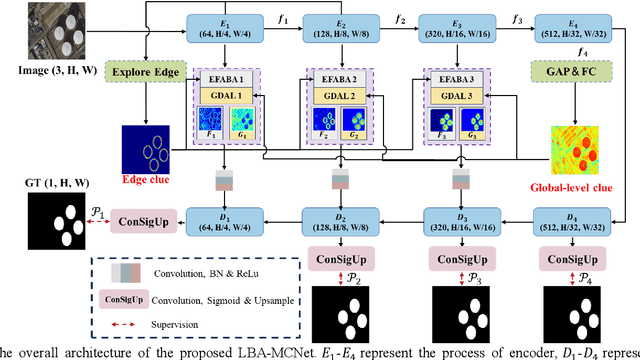Dejun Feng
Localization, balance and affinity: a stronger multifaceted collaborative salient object detector in remote sensing images
Oct 31, 2024



Abstract:Despite significant advancements in salient object detection(SOD) in optical remote sensing images(ORSI), challenges persist due to the intricate edge structures of ORSIs and the complexity of their contextual relationships. Current deep learning approaches encounter difficulties in accurately identifying boundary features and lack efficiency in collaboratively modeling the foreground and background by leveraging contextual features. To address these challenges, we propose a stronger multifaceted collaborative salient object detector in ORSIs, termed LBA-MCNet, which incorporates aspects of localization, balance, and affinity. The network focuses on accurately locating targets, balancing detailed features, and modeling image-level global context information. Specifically, we design the Edge Feature Adaptive Balancing and Adjusting(EFABA) module for precise edge localization, using edge features to guide attention to boundaries and preserve spatial details. Moreover, we design the Global Distributed Affinity Learning(GDAL) module to model global context. It captures global context by generating an affinity map from the encoders final layer, ensuring effective modeling of global patterns. Additionally, deep supervision during deconvolution further enhances feature representation. Finally, we compared with 28 state of the art approaches on three publicly available datasets. The results clearly demonstrate the superiority of our method.
Dual Feedback Attention Framework via Boundary-Aware Auxiliary and Progressive Semantic Optimization for Salient Object Detection in Optical Remote Sensing Imagery
Mar 06, 2023Abstract:Salient object detection in optical remote sensing image (ORSI-SOD) has gradually attracted attention thanks to the development of deep learning (DL) and salient object detection in natural scene image (NSI-SOD). However, NSI and ORSI are different in many aspects, such as large coverage, complex background, and large differences in target types and scales. Therefore, a new dedicated method is needed for ORSI-SOD. In addition, existing methods do not pay sufficient attention to the boundary of the object, and the completeness of the final saliency map still needs improvement. To address these issues, we propose a novel method called Dual Feedback Attention Framework via Boundary-Aware Auxiliary and Progressive Semantic Optimization (DFA-BASO). First, Boundary Protection Calibration (BPC) module is proposed to reduce the loss of edge position information during forward propagation and suppress noise in low-level features. Second, a Dual Feature Feedback Complementary (DFFC) module is proposed based on BPC module. It aggregates boundary-semantic dual features and provides effective feedback to coordinate features across different layers. Finally, a Strong Semantic Feedback Refinement (SSFR) module is proposed to obtain more complete saliency maps. This module further refines feature representation and eliminates feature differences through a unique feedback mechanism. Extensive experiments on two public datasets show that DFA-BASO outperforms 15 state-of-the-art methods. Furthermore, this paper strongly demonstrates the true contribution of DFA-BASO to ORSI-SOD by in-depth analysis of the visualization figure. All codes can be found at https://github.com/YUHsss/DFA-BASO.
 Add to Chrome
Add to Chrome Add to Firefox
Add to Firefox Add to Edge
Add to Edge